150+ white-label financial research products.
Built for flexibility and designed for seamless client customization.
150+ white-label financial research products.
Built for flexibility and designed for seamless client customization.
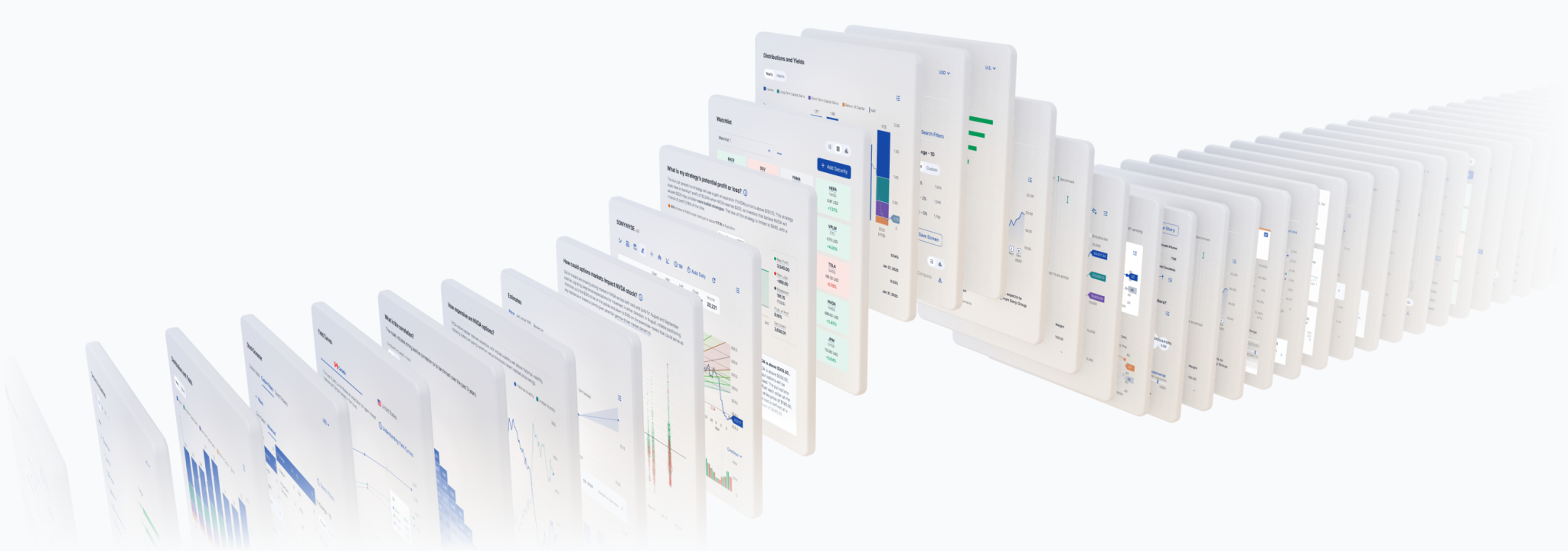
Powered by financial-grade component library
2,700+ reusable components built around real market data, designed for scalability, and fully synced with development.
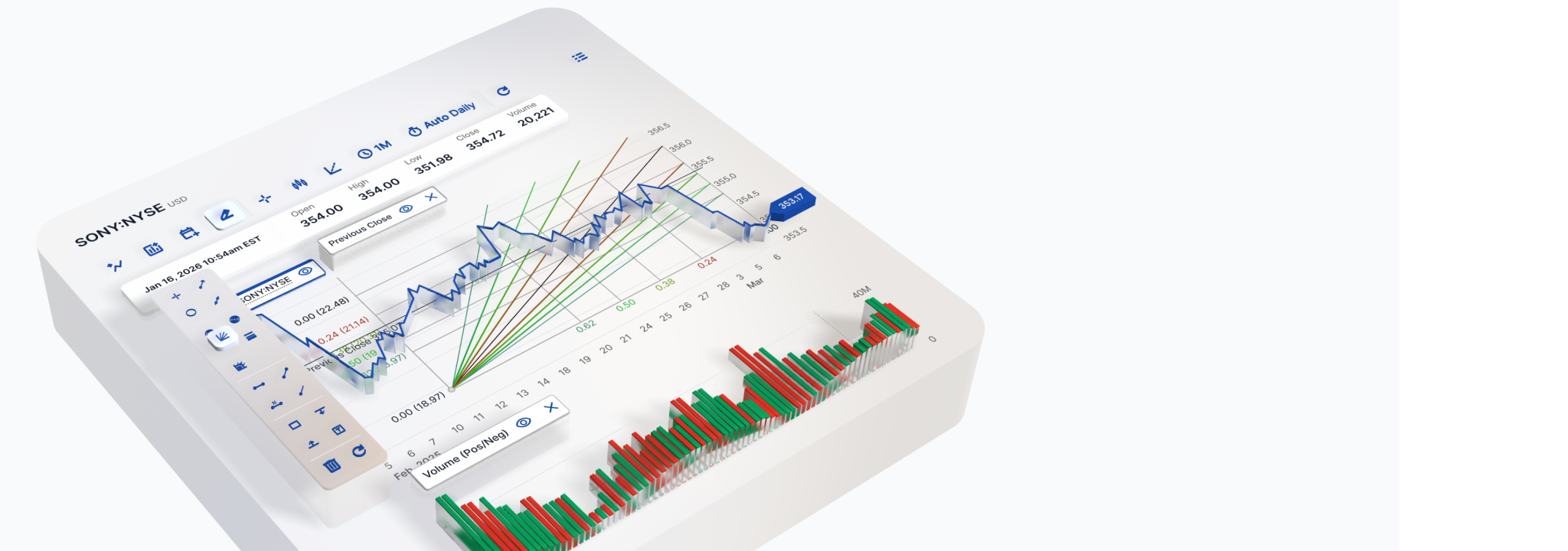
Design and build hundreds of modular financial products, adaptable to diverse data sets and customizable for various client needs.
Establish a robust financial design component library, tightly aligned with the codebase to enable fast and efficient customization through close collaboration with engineering.














A scalable design system built to turn complex financial data into clear, adaptable, and insight-driven experiences.
From insight to execution, a scalable design process that transforms business goals and data into flexible, client-ready product experiences.
Define Requirements & Feature Scope
Define a clear and focused set of features aligned with the product vision, based on the business plan, client and user needs, and research insights.
Data Research & Expert Collaboration
Collaborate with financial experts and data teams to identify what matters to users, and determine how to visualize that data with clarity and value.
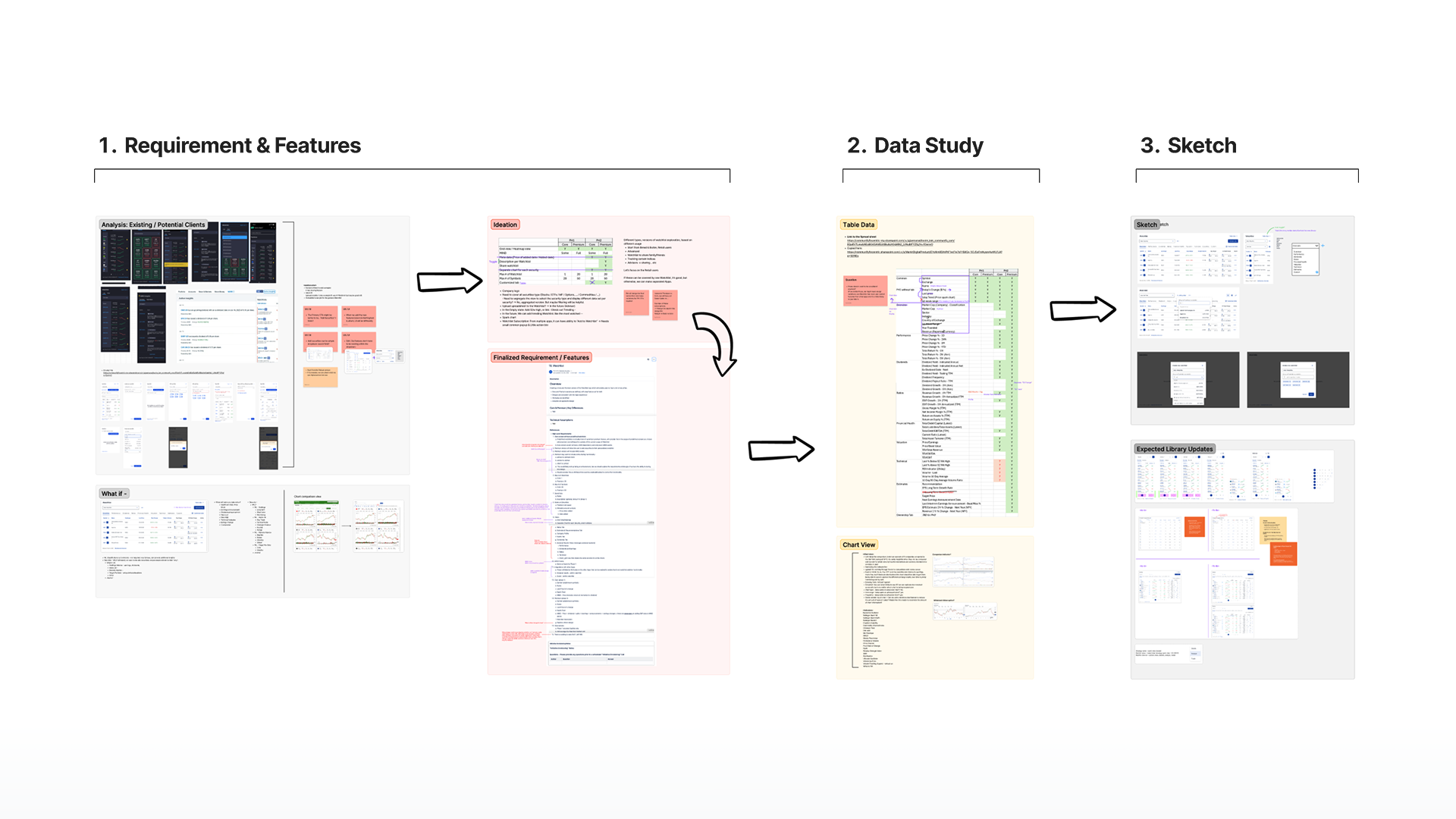
Design Exploration & Full-scale Iteration
Explore the full version of the product with all intended features, using scalable components from the design system to build at maximum complexity.
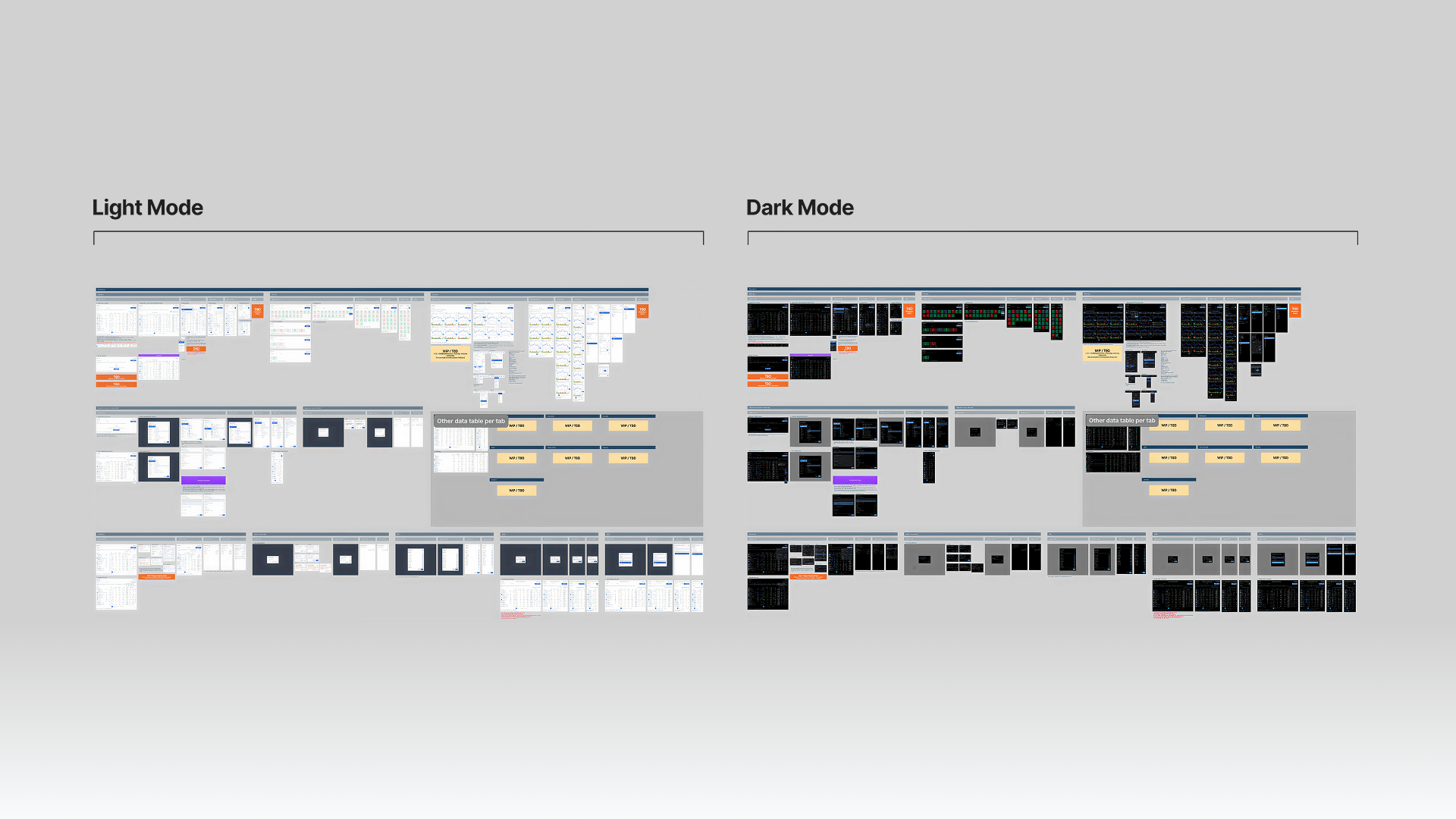
System Updates: Components & Variables
Add or refine components and variables in the design library to support scalability across modules, markets, regions, and data providers.
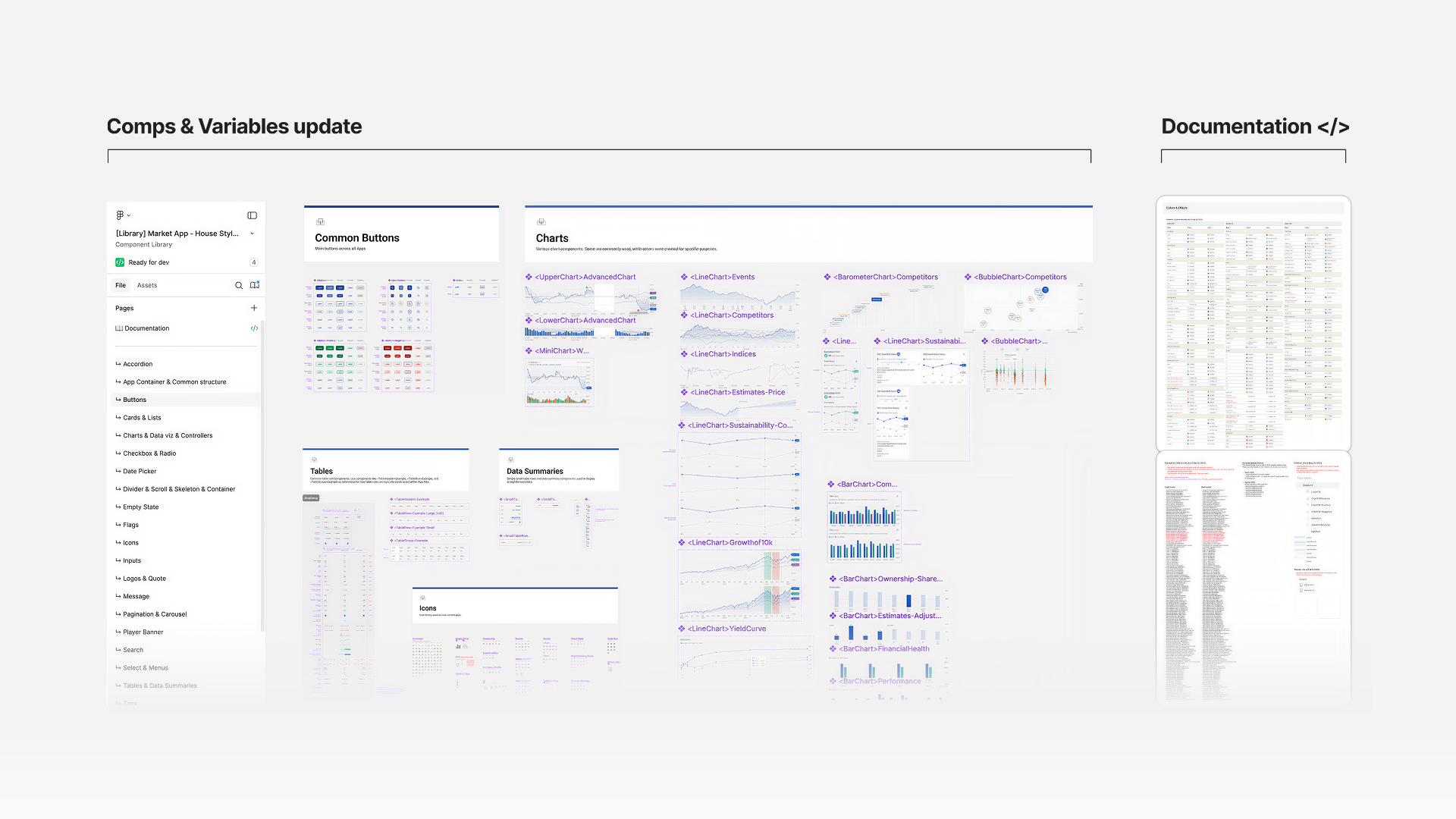
Final Design for Release
Distill the design into a focused MVP or release version, with variations tailored to platform constraints or business priorities.
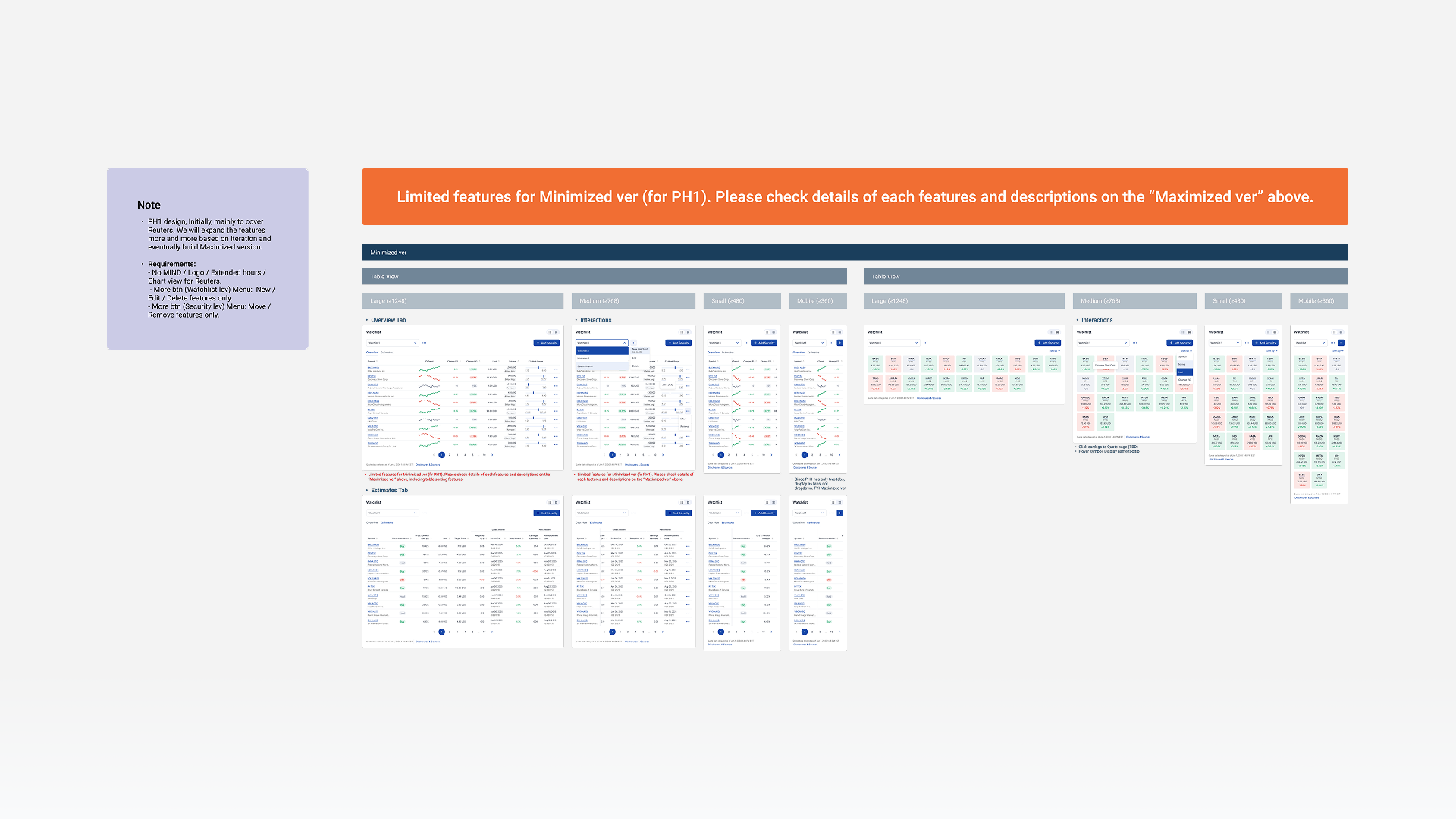
Client-Specific Customization
Select relevant modules based on each client’s data entitlements, then tailor them using custom variable libraries, enabling efficient front-end implementation in sync with engineering.
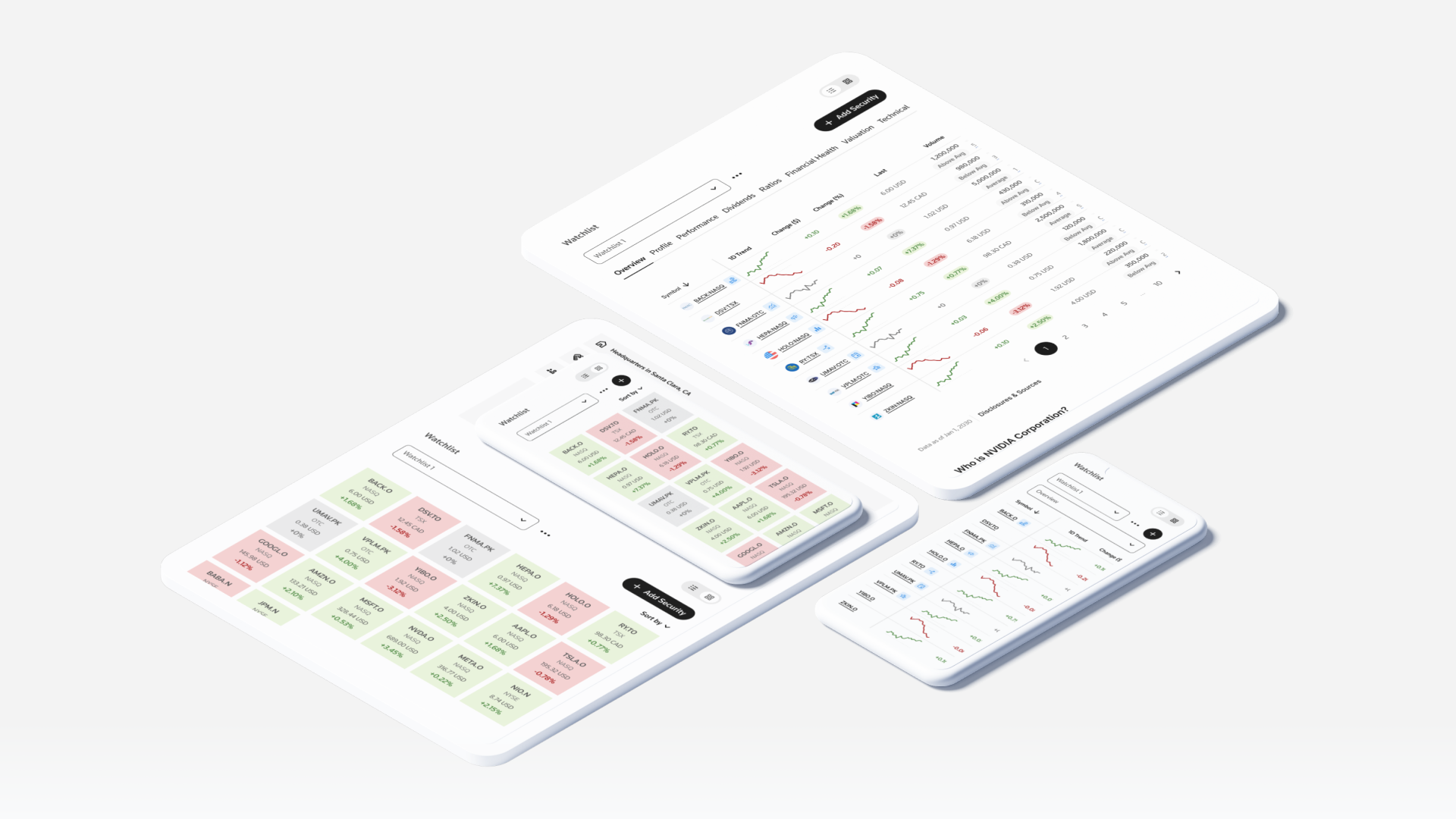
Every challenge was an opportunity to scale — here's how I approached it.
Needed to build a unified design system that could support multiple concurrent projects — each with different scopes, requirements, and legacy constraints.
Tight deadlines and custom client needs were leading to heavy design and development rework across projects.
As the company shifted toward product-based delivery, the existing ad-hoc design process no longer fit the new workflow and scaling model.
Audited all design use cases across projects and built a scalable component system that supports variation and modular presentation — enabling consistent design at scale.
Introduced a variables-based theming structure. Components stayed centrally managed, while client-specific styling was handled through custom variable overrides — significantly reducing delivery time.
Established a standardized product design process. Created onboarding materials, held regular office hours, and managed a Q&A channel to drive adoption across design and engineering teams.
Needed to build a unified design system that could support multiple concurrent projects — each with different scopes, requirements, and legacy constraints.
Audited all design use cases across projects and built a scalable component system that supports variation and modular presentation — enabling consistent design at scale.
Tight deadlines and custom client needs were leading to heavy design and development rework across projects.
Introduced a variables-based theming structure. Components stayed centrally managed, while client-specific styling was handled through custom variable overrides — significantly reducing delivery time.
As the company shifted toward product-based delivery, the existing ad-hoc design process no longer fit the new workflow and scaling model.
Established a standardized product design process. Created onboarding materials, held regular office hours, and managed a Q&A channel to drive adoption across design and engineering teams.